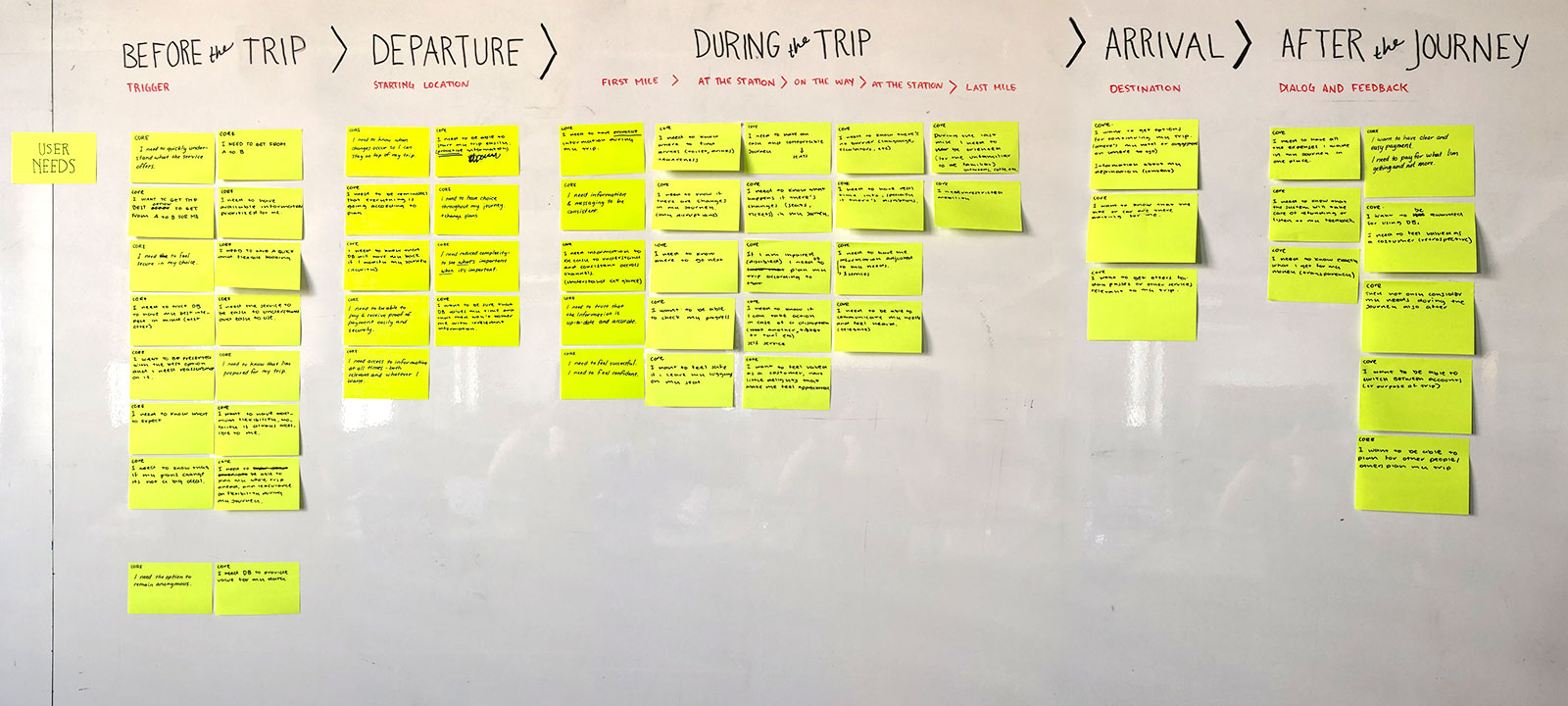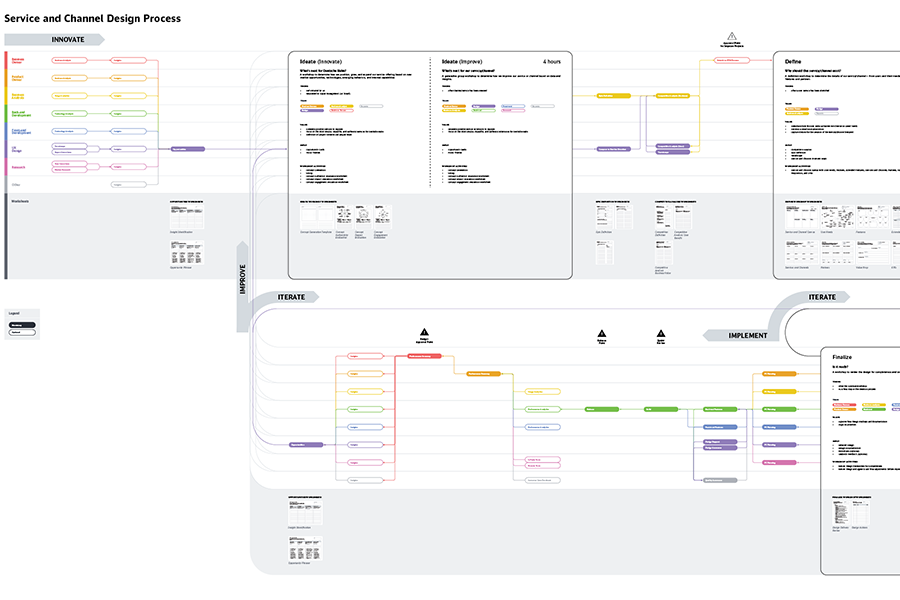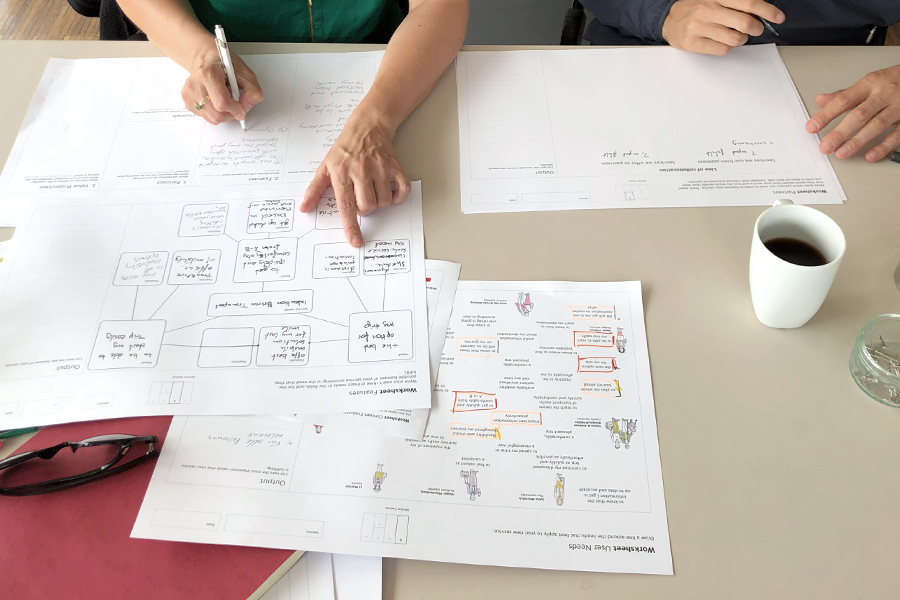Deutsche Bahn is the German rail company.
Because innovation is easily lost when maintaining such large-scale infrastructure, a small, mostly external team was assembled to look at the existing service offering and to define a process for introducing new ones. We then tested this process to ensure its viability.
Understanding User Needs
A project of this scale needs to be rooted in an existing reality, so we started by understanding the existing service portfolio and user needs.
We started by creating an inventory of services, looking not only what was offered but how and through which channels. We limited our scope to those services directly affecting users, and then analyzed where on the journey each was most effective and which user needs each was fulfilling.
Our own process highlighted some of the tools that would be necessary and provided structure for the overall process we were designing.

An exercise mapping the different services offered across the entire journey
A Formula to Innovate
We created a process framework for innovation complete with workshops, worksheets, and acceptance gates.
Side-by-side with researchers and key stakeholders, we iterated on a process for identifying opportunties, brainstorming concepts, ranking possible solutions, and bringing new services to life. We captured the process in a diagram highlighting activities and outcomes along with statements of purpose and sample content.

We created a design to bring both photos and data to life, while also engaging users with simple yet playful interactions.

We mapped out the entire flow so that we could see the system and the details all in one view.
Testing and Refining
We tested the framework with a couple of sample projects, exploring the creation of both a new service and a new channel.
Once we felt confident in our recommended approach, we tested it. Stemming from a workshop with stakeholders, we designed a new service across multiple channels as well as a new channel enabling and extending multiple services.
These were fed back into the organization and plans were made to explore further, completing the development half of the innovation process.